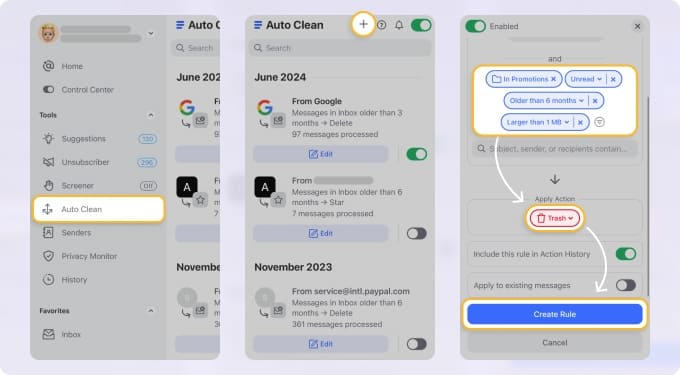Bluehost SMTP Settings
The term SMTP refers to the Simple Mail Transfer Protocol, which describes the configuration of your outgoing mail server that enables software to send and receive electronic mail over the internet.
With that out of the way, the Bluehost SMTP settings are as follows:
| Option | Description |
|---|---|
| SMTP Host: | example.com |
| SMTP Port: | 465 SSL/TLS |
| SMTP Username: | Your full email address (name@domain.com) |
| SMTP Password: | Your mailbox password |
💡 Note: replace "example.com" with the name of your domain.
Bluehost Email Settings For Receiving Emails
For receiving messages, the POP and IMAP settings are needed instead of the SMTP settings.
Bluehost POP Settings
| Option | Description |
|---|---|
| POP3 Host: | example.com |
| POP3 Port: | 995 |
| Requires SSL: | Yes |
| POP3 Username: | Your full email address (name@domain.com) |
| POP3 Password: | Your mailbox password |
💡 Note: replace "example.com" with the name of your domain.
Bluehost IMAP Settings
| Option | Description |
|---|---|
| IMAP Host: | example.com |
| IMAP Port: | 993 |
| Requires SSL: | Yes |
| IMAP Username: | Your full email address (name@domain.com) |
| IMAP Password: | Your mailbox password |
A Bluehost Inbox That Stays Clean Without Extra Work
Once you’ve got your Bluehost email set up with IMAP or POP, it’s time to think about how to keep that inbox from becoming a mess. That’s where Clean Email comes in. Its Auto Clean feature helps you set simple rules to automatically sort, archive, or delete messages over time—so your inbox stays tidy even when you’re busy.


If you use your Bluehost email for business, chances are you get a lot of similar messages: order confirmations, customer support threads, or updates. With Smart Folders, these messages get grouped automatically by type, making it easier to handle them in bulk. You don’t have to search or set up filters manually—Clean Email does it for you.


Trying to free up space or just want to tidy up old messages? Use Clean Email’s Advanced Filtering + Bulk Actions to remove older emails or large file-heavy conversations in seconds. It’s a great way to make room without spending hours scrolling.
And the best part? Clean Email connects directly with your Bluehost inbox and reflects changes across your mail apps. So no matter where you check your email, everything stays in sync and organized.
Additional Key Points to Remember
While the email settings could get you started, there are other things to keep in mind to keep going.
If you are still having trouble configuring your mail client, you should verify the information you have entered and make appropriate changes. In addition to that, check to see that your website's domain is pointing to Bluehost. For non-Bluehost-registered domains, you may need to modify the name servers. You can learn more about this through Bluehost Name Servers.
💡 Note: Also, keep in mind that the procedure of setting up each mail client can be somewhat different from one another. The majority of them offer support for Autodiscover, a feature that can automatically determine some or all of the necessary server settings based on your username and password. Take a look at this guide for a detailed breakdown of your client application.
Looking for CenturyLink settings or EarthLink email settings? Our Blog's Email Settings category contains specs for all major mail service providers.
IMAP or POP3: What Is The Difference?
When configuring a mail address in a client application, you will get prompted to choose between configuring it as POP3 or IMAP.
When you want to retrieve a message from a mail server to view it on your device, you can use either the POP or the IMAP protocol. Nevertheless, there are key differences between both, and those differences provide advantages to one over the other in several contexts.
IMAP stands for "Internet Message Access Protocol." If you are using IMAP, the message will not get stored on the local device, such as a computer; rather, you will keep it on the server. On the other hand, POP3 stands for "Post Office Protocol." When you use POP3 mail, it will connect and attempt to save the message in its original location on the local device, such as a computer or mobile.
In the end, IMAP is the preferred protocol for getting emails across numerous devices, as it is generally more robust. Alternatively, POP may be a great solution if you wish to have offline access to all of your messages and own a dedicated email device.
Check out how Bluehost email forwarding works.
Please let us know, and we’ll fix them immediately.